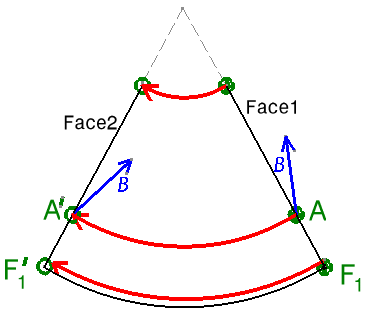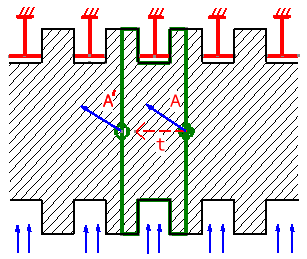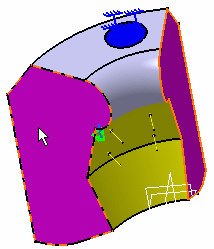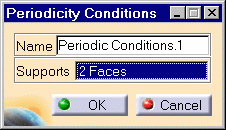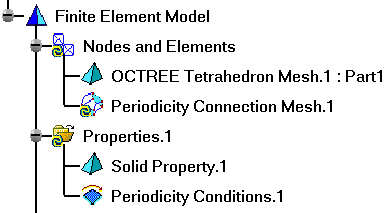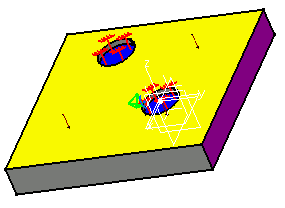Creating Periodicity Conditions
| Periodicity conditions enable you to perform an analysis on the
solid section of a periodic part. This solid section should represent a
cyclic period of the entire part as shown in two examples below.
Applying periodicity conditions is cost saving: you compute only a section of the part and get a result that is representative of the whole part.
|
|
Two types of periodicity conditions can be applied:
|
|
| To use periodicity conditions, you need to make sure the geometry as
well as the created restraints and loads are periodic. The geometry
also needs to be regular at the place the section is cut: discontinuity is not allowed.
|
|
| This task shows you how to simulate periodicity
conditions by linking together the degrees of freedom of two faces that
undergo transformation. You will apply cyclic symmetry.
|
|
| You can use the sample44.CATAnalysis document from the
samples directory for this
task.
|
|
| 1. Click the Periodicity Conditions
icon The Periodicity Conditions dialog box appears.
|
|
| 2. Select on the model both planes
to be used for generating periodicity of the part section. In this
particular case, select both pink faces.
The selected planes are high-lighted.
The Periodicity Conditions dialog box is updated.
3. Click OK in the Periodicity Conditions dialog box. The periodicity conditions are now created. The specification tree is updated.
|
|
|
|
If you want to apply Periodicity Conditions via regular symmetry, open
the sample43.CATAnalysis document from the
samples directory.
|
|
|
|
